Article by Alison Hugill in Berlin; Tuesday, Jan. 21, 2014
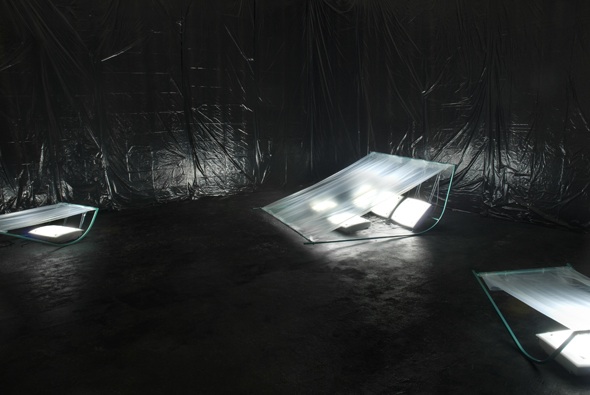 Martin Kohout – “5006 years of daylight and silent adaptation” installation view (2014); Photo courtesy of Martin Kohout and Exile
Martin Kohout – “5006 years of daylight and silent adaptation” installation view (2014); Photo courtesy of Martin Kohout and Exile
The small Norwegian town of Rjukan, hidden in a valley and shrouded in darkness half of the year, recently mounted a series of giant mirrors on a hillside to reflect the sun (which rarely reaches its depths) onto the townspeople below. The lack of sunlight and Vitamin D was leading to extreme cases of SAD (Seasonal Affective Disorder).
Martin Kohout’s current show 5006 years of daylight and silent adaptation at Exile confronts this modern problem and its sometimes dubious solutions in an age of hyper-productivity: seasonal depression as both compounded and assuaged by capitalist technologies. The exhibition is mounted in a purposefully raw manner, black plastic lining the walls of the gallery to produce a slippery, fetishistic aesthetic. Several ‘Daylight’ lamps – designed to simulate sunlight and boost energy levels – light up the room from below. They’re covered in a translucent greenhouse plastic that seems to counteract the intended effects. Daylight lamps are only beneficial when experienced at an extremely close range, entering through the retina and sending nerve signals to the parts of the brain that affect mood.
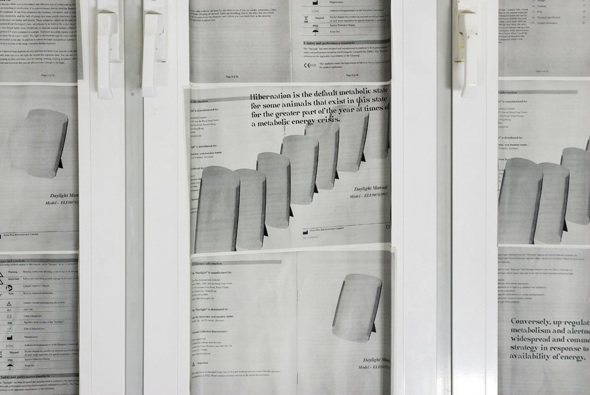 Martin Kohout – “Daylight Manual (detail)”( 2014), window display, dimensions variable; Photo courtesy of Martin Kohout and Exile
Martin Kohout – “Daylight Manual (detail)”( 2014), window display, dimensions variable; Photo courtesy of Martin Kohout and Exile
The instructional manual for the use of Daylight lamps is pasted to the windows of the gallery space, ironically blocking out the natural light from the courtyard outside. Kohout’s show is a reflection on hibernation. A phenomenon that was once normal to humans living in dark and cold climates, as a way to save energy during a time of food scarcity, is now stigmatized as evidence of laziness or mental illness. The light therapy serves to keep people working at summertime levels, to avoid otherwise bending to their bodies’ demands.
A small alcove in the gallery shows several of Kohout’s ‘Survival Guides’, a series of book covers hidden behind privacy screens, so they can only be viewed straight-on. The book covers have been subtly Photoshopped, with paranoid markings scribbled across them. When approached at an angle the privacy screens make them look like brightly coloured, metallic rectangles. The screen has been roughly applied, tying together the sloppy finish of the whole exhibition and adding an absurd quality to the otherwise ‘tidy solutions’ on offer.
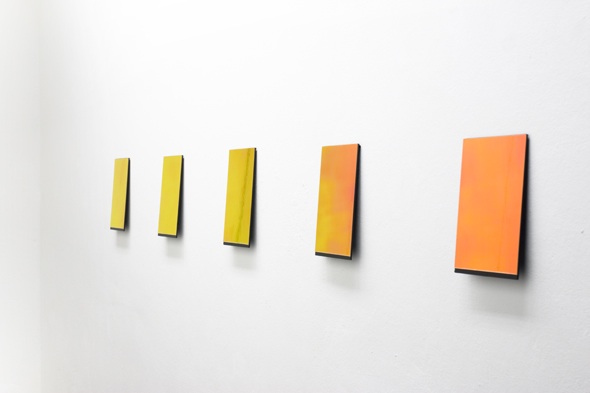 Martin Kohout – “Survival Guides” installation view (2014); Photo courtesy of Martin Kohout and Exile
Martin Kohout – “Survival Guides” installation view (2014); Photo courtesy of Martin Kohout and Exile
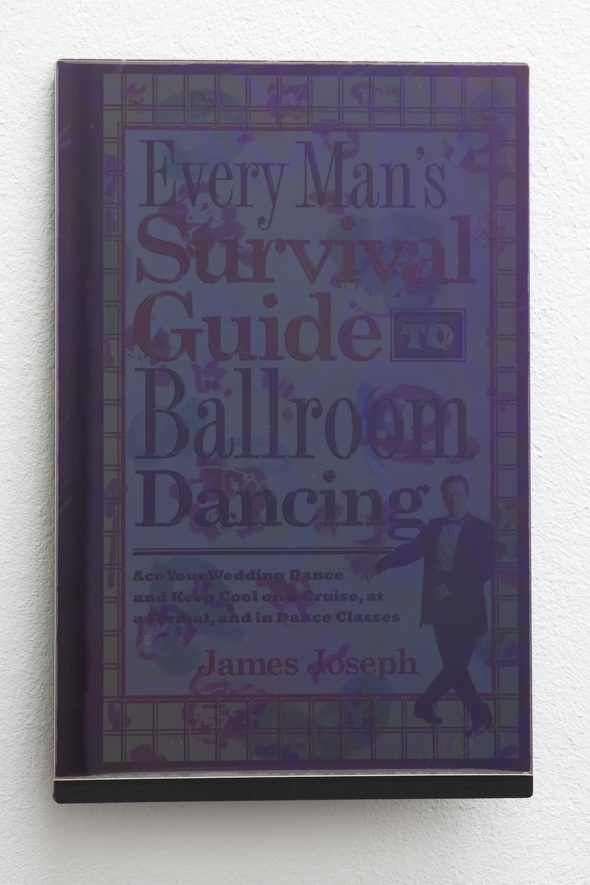 Martin Kohout – “Survival Guides for Ballroom Dancers” (2013), Golden privacy filter and archival inkjet print on black Forex, 25,7 x 17 cm; Photo courtesy of Martin Kohout and Exile
Martin Kohout – “Survival Guides for Ballroom Dancers” (2013), Golden privacy filter and archival inkjet print on black Forex, 25,7 x 17 cm; Photo courtesy of Martin Kohout and Exile
Kohout’s musical alterego, Tole, performed live at the opening of 5006 years of daylight and silent adaptation, the dripping beats complimenting the sleek and shiny wall coverings of the space. The Daylight Manual pasted to the windows of the gallery included excerpts from Kohout’s own written reflections on hibernation that connected the different elements of the show nicely: “loud, narrow beats help me to focus when I scroll the endless record of disasters that mostly happened while I was dormant.” The question of survival is omnipresent in Kohout’s show at Exile, whether as a question of surviving the high-level demands of increasingly precarious labour or the cyclical woes of winter.
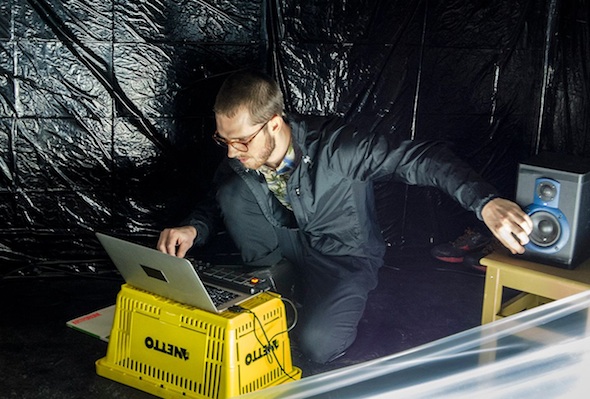 Martin Kohout – Tole Performance at 5006 years of daylight and silent adaptation opening, Exile (2014); Photo courtesy of Martin Kohout and Exile
Martin Kohout – Tole Performance at 5006 years of daylight and silent adaptation opening, Exile (2014); Photo courtesy of Martin Kohout and Exile
___________________________________________________________________________________
Additional Information
EXILE
“5006 years of daylight and silent adaptation” – MARTIN KOHOUT
Exhibition: Jan. 11 – Feb. 15, 2014
Skalitzer Straße 104 (click here for map)
___________________________________________________________________________________
Alison Hugill completed a Masters in Art Theory at Goldsmiths College, University of London (2011). Her research focusses on marxist feminist politics and aesthetic theories of community, communication and communism. Alison is an editor, writer and curator based in Berlin.


























